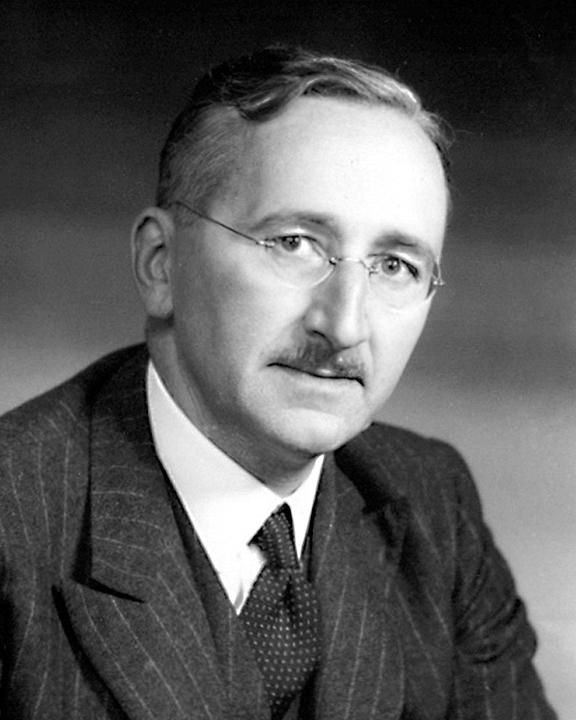|
Labor Market Segmentation
Labor market segmentation is the division of the labor market according to a principle such as occupation, geography and industry. One type of segmentation is to define groups "with little or no crossover capability", such that members of one segment cannot easily join another segment. This can result in different segments, for example men and women, receiving different wages for the same work. 19th-century Irish political economist John Elliott Cairnes referred to this phenomenon as that of "noncompeting groups". A related concept is that of a dual labour market (DLM), that splits the aggregate labor market between a primary sector and a secondary sector. Neoclassical economics The theory of labor market segmentation contrasts with neo-classical economic theory, which posits the existence of a unified market for labor, consisting of buyers and sellers in open competition. The labor market thus functions as do other markets. In this model, the difference between different worker ... [...More Info...] [...Related Items...] OR: [Wikipedia] [Google] [Baidu] |
John Elliott Cairnes
John Elliott Cairnes (26 December 1823 – 8 July 1875) was an Republic of Ireland, Irish-born political economist. He has been described as the "last of the classical economists". Biography John Cairnes was born at Castlebellingham, County Louth. He was the son of William Elliott Cairnes (1787–1863) of Stameen, near Drogheda, and Marianne Woolsey, whose mother was the sister of Sir William Bellingham, 1st Baronet of Castlebellingham. John's father decided upon a business career, against the wishes of his mother (Catherine Moore of Moore Hall, Killinchy), and became a partner in the Woolsey Brewery at Castlebellingham. In 1825, William Cairnes started on his own account in Drogheda, making the Drogheda Brewery an unqualified success. He was remembered for his great business capacity and for the deep interest he took in charity. After leaving school, John Cairnes spent some years in the counting-house of his father at Drogheda. His tastes, however, lay altogether in the direc ... [...More Info...] [...Related Items...] OR: [Wikipedia] [Google] [Baidu] |
Dual Labour Market
The dual labour market (also referred to as the segmented labour market) theory aims at introducing a broader range of factors into economic research, such as institutional aspects, race and gender. It divides the economy into two parts, called the "primary" and "secondary" sectors. The distinction may also be drawn between formal/informal sectors or sectors with high/low value-added. A broader concept is that of labor market segmentation. While the word "dual" implies a division into two parallel markets, segmentation in its broadest sense may involve several distinct labor markets. In a dual labour market, a secondary sector is characterized by short-term employment relationships, little or no prospect of internal promotion, and the determination of wages primarily by market forces. In terms of occupations, it consists primarily of low or unskilled jobs, whether they are blue-collar (manual labour), white-collar (e.g. filing clerks), or service industry (e.g. waiters). These jo ... [...More Info...] [...Related Items...] OR: [Wikipedia] [Google] [Baidu] |
Neo-classical Economic Theory
Neoclassical economics is an approach to economics in which the production, consumption and valuation (pricing) of goods and services are observed as driven by the supply and demand model. According to this line of thought, the value of a good or service is determined through a hypothetical maximization of utility by income-constrained individuals and of profits by firms facing production costs and employing available information and factors of production. This approach has often been justified by appealing to rational choice theory, a theory that has come under considerable question in recent years. Neoclassical economics historically dominated macroeconomics and, together with Keynesian economics, formed the neoclassical synthesis which dominated mainstream economics as "neo-Keynesian economics" from the 1950s to the 1970s.Clark, B. (1998). ''Principles of political economy: A comparative approach''. Westport, Connecticut: Praeger. Nadeau, R. L. (2003). ''The Wealth of Natur ... [...More Info...] [...Related Items...] OR: [Wikipedia] [Google] [Baidu] |
Human Capital
Human capital is a concept used by social scientists to designate personal attributes considered useful in the production process. It encompasses employee knowledge, skills, know-how, good health, and education. Human capital has a substantial impact on individual earnings. Research indicates that human capital investments have high economic returns throughout childhood and young adulthood. Companies can invest in human capital, for example, through education and training, enabling improved levels of quality and production. As a result of his conceptualization and modeling work using Human Capital as a key factor, the 2018 Nobel Prize for Economics was jointly awarded to Paul Romer, who founded the modern innovation-driven approach to understanding economic growth. In the recent literature, the new concept of task-specific human capital was coined in 2004 by Robert Gibbons, an economist at MIT, and Michael Waldman, an economist at Cornell University. The concept emphasizes ... [...More Info...] [...Related Items...] OR: [Wikipedia] [Google] [Baidu] |
Compensating Wage Differentials
Wage differential is a term used in labour economics to analyze the relation between the wage rate and the unpleasantness, risk, or other undesirable attributes of a particular job. A compensating differential, which is also called a compensating wage differential or an equalizing difference, is defined as the additional amount of income that a given worker must be offered in order to motivate them to accept a given undesirable job, relative to other jobs that worker could perform. One can also speak of the compensating differential for an especially desirable job, or one that provides special benefits, but in this case the differential would be ''negative'': that is, a given worker would be willing to accept a ''lower'' wage for an especially desirable job, relative to other jobs. The idea of compensating differentials has been used to analyze issues such as the risk of future unemployment, the risk of injury, the risk of unsafe intercourse, the monetary value workers place on thei ... [...More Info...] [...Related Items...] OR: [Wikipedia] [Google] [Baidu] |
Perfect Competition
In economics, specifically general equilibrium theory, a perfect market, also known as an atomistic market, is defined by several idealizing conditions, collectively called perfect competition, or atomistic competition. In Economic model, theoretical models where conditions of perfect competition hold, it has been demonstrated that a Market (economics), market will reach an Economic equilibrium, equilibrium in which the quantity supplied for every Goods and services, product or service, including Workforce, labor, equals the quantity demanded at the current price. This equilibrium would be a Pareto optimum. Perfect competition provides both allocative efficiency and productive efficiency: * Such markets are ''allocatively efficient'', as output will always occur where marginal cost is equal to average revenue i.e. price (MC = AR). In perfect competition, any Profit maximization, profit-maximizing producer faces a market price equal to its marginal cost (P = MC). This implies that ... [...More Info...] [...Related Items...] OR: [Wikipedia] [Google] [Baidu] |
Craft Unions
Craft unionism refers to a model of trade unionism in which workers are organised based on the particular craft or trade in which they work. It contrasts with industrial unionism, in which all workers in the same industry are organized into the same union, regardless of differences in skill. Under this approach, each union is organized according to the craft, or specific work function, of its members. For example, in the building trades, all carpenters belong to the carpenters' union, the plasterers join the plasterers' union, and the painters belong to the painters' union. Each craft union has its own administration, its own policies, its own collective bargaining agreements and its own union halls. The primary goal of craft unionism is the betterment of the members of the particular group and the reservation of job opportunities to members of the union and those workers allowed to seek work through the union's hiring hall. Origins The first unions established in Russia in the ea ... [...More Info...] [...Related Items...] OR: [Wikipedia] [Google] [Baidu] |
Professional Associations
A professional association (also called a professional body, professional organization, or professional society) usually seeks to further a particular profession, the interests of individuals and organisations engaged in that profession, and the public interest. In the United States, such an association is typically a nonprofit business league for tax purposes. Roles The roles of professional associations have been variously defined: "A group, of people in a learned occupation who are entrusted with maintaining control or oversight of the legitimate practice of the occupation;" also a body acting "to safeguard the public interest;" organizations which "represent the interest of the professional practitioners," and so "act to maintain their own privileged and powerful position as a controlling body." Professional associations are ill defined although often have commonality in purpose and activities. In the UK, the Science Council defines a professional body as "an organisation wit ... [...More Info...] [...Related Items...] OR: [Wikipedia] [Google] [Baidu] |
Neoliberal
Neoliberalism (also neo-liberalism) is a term used to signify the late 20th century political reappearance of 19th-century ideas associated with free-market capitalism after it fell into decline following the Second World War. A prominent factor in the rise of conservative and libertarian organizations, political parties, and think tanks, and predominantly advocated by them, it is generally associated with policies of economic liberalization, including privatization, deregulation, globalization, free trade, monetarism, austerity, and reductions in government spending in order to increase the role of the private sector in the economy and society. The defining features of neoliberalism in both thought and practice have been the subject of substantial scholarly debate. As an economic philosophy, neoliberalism emerged among European liberal scholars in the 1930s as they attempted to revive and renew central ideas from classical liberalism as they saw these ideas diminish in popul ... [...More Info...] [...Related Items...] OR: [Wikipedia] [Google] [Baidu] |
Blue Collar
A blue-collar worker is a working class person who performs manual labor. Blue-collar work may involve skilled or unskilled labor. The type of work may involving manufacturing, warehousing, mining, excavation, electricity generation and power plant operations, electrical construction and maintenance, custodial work, farming, commercial fishing, logging, landscaping, pest control, food processing, oil field work, waste collection and disposal, recycling, construction, maintenance, shipping, driving, trucking and many other types of physical work. Blue-collar work often involves something being physically built or maintained. In contrast, the white-collar worker typically performs work in an office environment and may involve sitting at a computer or desk. A third type of work is a service worker (pink collar) whose labor is related to customer interaction, entertainment, sales or other service-oriented work. Many occupations blend blue, white, or pink-collar work and are ... [...More Info...] [...Related Items...] OR: [Wikipedia] [Google] [Baidu] |
White-collar Worker
A white-collar worker is a person who performs professional, desk, managerial, or administrative work. White-collar work may be performed in an office or other administrative setting. White-collar workers include job paths related to government, consulting, academia, accountancy, business and executive management, customer support, design, engineering, market research, finance, human resources, operations research, marketing, public relations, information technology, networking, law, healthcare, architecture, and research and development. Other types of work are those of a grey-collar worker, who has more specialized knowledge than those of a blue-collar worker, whose job requires manual labor. Etymology The term refers to the white dress shirts of male office workers common through most of the nineteenth and twentieth centuries in Western countries, as opposed to the blue overalls worn by many manual laborers. The term "white collar" is credited to Upton Sinclair, an Amer ... [...More Info...] [...Related Items...] OR: [Wikipedia] [Google] [Baidu] |




